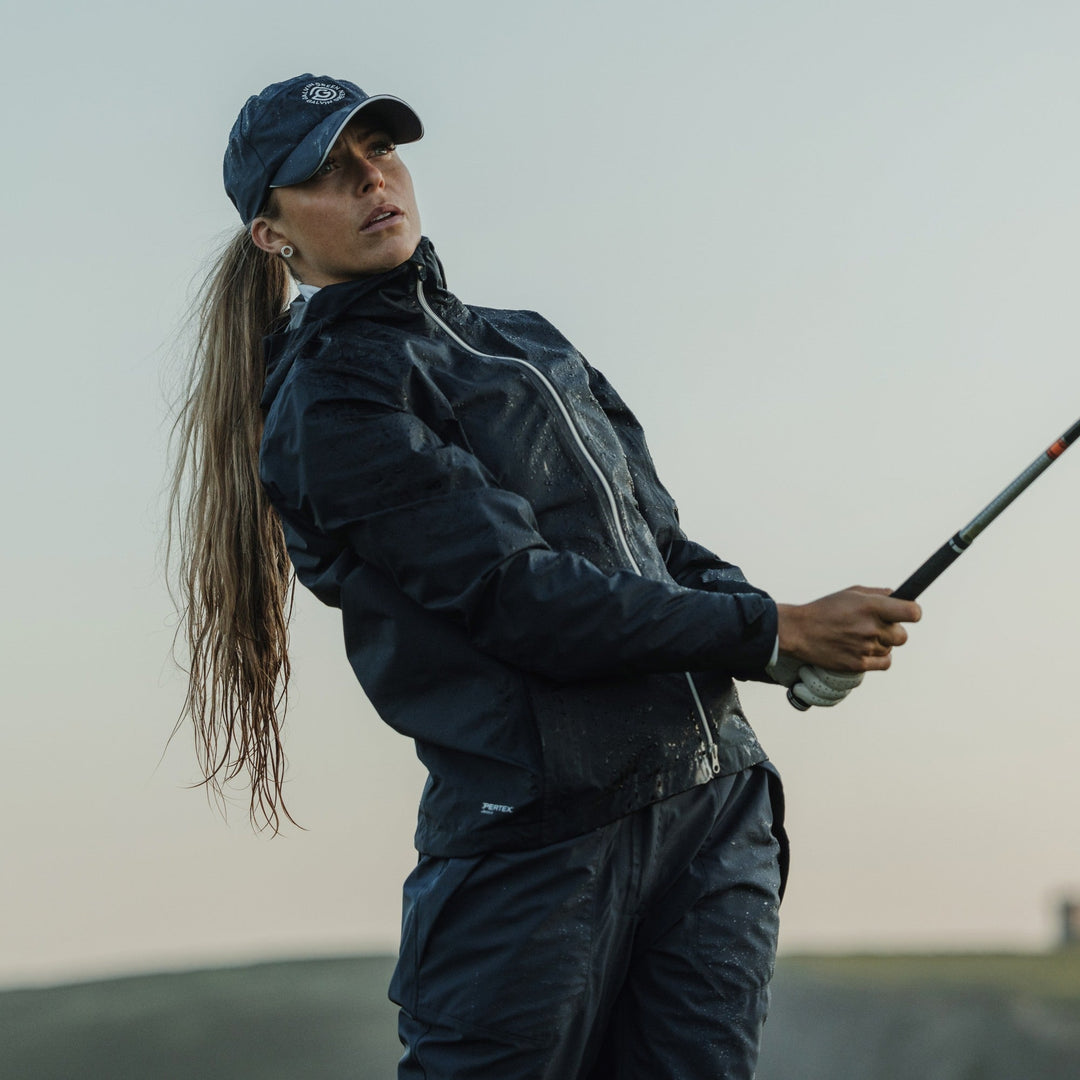What to Wear Golfing: Golf Dress Code and Appropriate Fashion
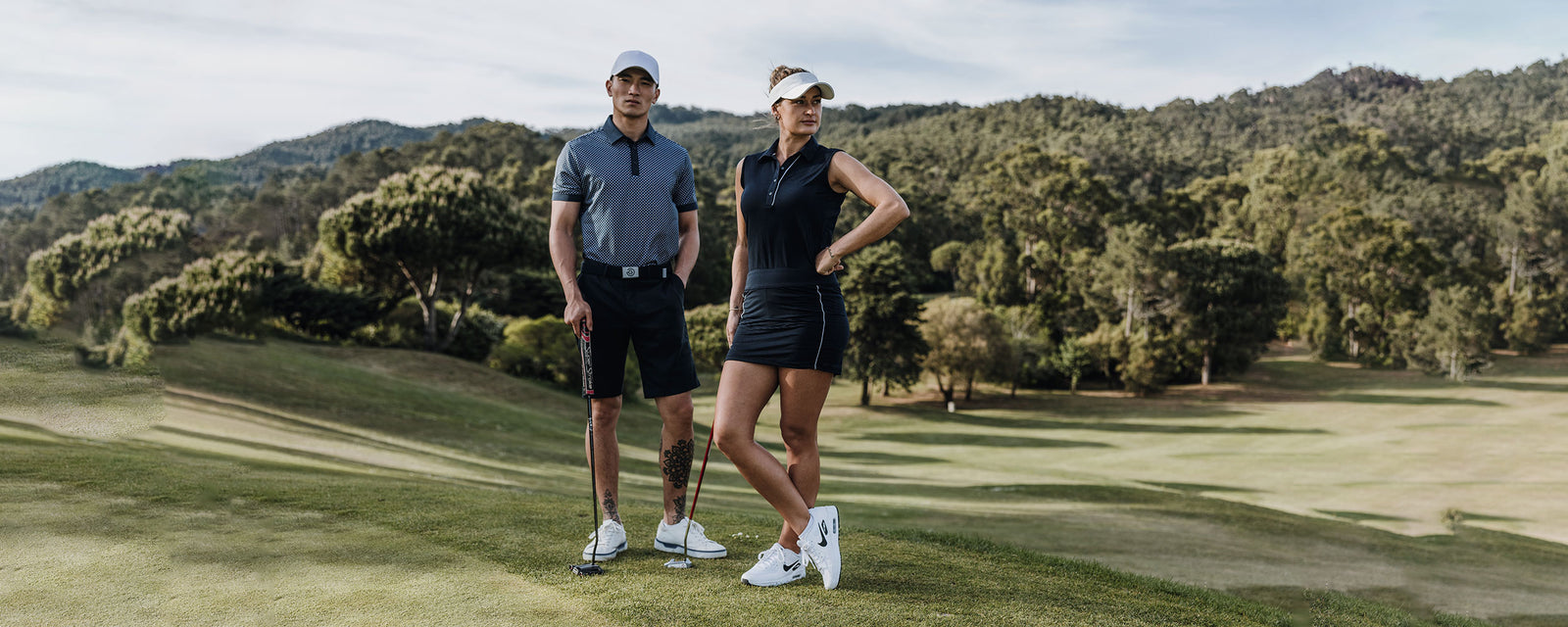
Golf is not just a sport; it's a culture—and part of that culture is dressing appropriately for the game. While golf fashion has evolved over the years, certain dress codes remain consistent across most courses. Whether you're a seasoned player or stepping onto the green for the first time, understanding what to wear is essential for a comfortable and enjoyable experience.
With its rich traditions and etiquette, golf has long been associated with a particular style of dress. Even if you’re not an avid player or fan, most people have seen clips of golf on TV or on social media—and if you’ve paid any attention, you’ll have noticed that the players are almost always wearing a collared shirt and tailored trousers or shorts. This is emblematic of the sport's traditional attire, which exists in part because of the dress codes that exist at most golf clubs.
Keep reading to find out why golf dress codes exist, what to know before you go, and the key pieces you’ll need to get dressed and look the part for most golf courses.
About the Golf Course Dress Code
At their root, dress codes exist to maintain the integrity of golf as a serious outdoor activity. Essentially, they are there to:
- Respect the history and traditions associated with golf
- Bring a sense of community to those who are playing
- Minimize distractions on the course
Indeed, golf dress codes help preserve the sport's identity and etiquette, ensuring that both newcomers and seasoned players alike adhere to its traditions. Golf courses implement dress codes; these are usually designed to cultivate a specific atmosphere and sense of community among players. These dress codes are not meant to be restrictive but rather to enhance the overall golfing experience.
Remember: Each Golf Course Has Different Rules
The most important thing to remember when it comes to golf dress codes? Check before you go!
Each golf course may have its own unique dress code requirements. While some golf courses have strict dress codes, others are more relaxed. Courses with stricter dress codes are typically those that are more expensive or prestigious—though bear in mind this is a guideline, not a rule on what to wear to golf. Strict dress codes exist to allow a golf course to uphold appearances, maintain a course’s reputation, respect traditions, and minimize distractions on the course for other players. However, even courses with a more casual atmosphere expect players to wear proper golf attire while enjoying the green.
Either way, it is essential to familiarize yourself with the specific dress code of the club you plan to visit (before visiting!) to ensure your attire is appropriate. By doing so, you can rest assured you won’t be turned away at the door due to inappropriate attire.

Proper Golf Attire for Most Courses
Golf course dress codes are designed to maintain a certain level of decorum while ensuring players are comfortable and appropriately attired for the game, and while they vary slightly from course to course, there are some basic rules that most adhere to.
Golf shirts
When it comes to tops, a collared golf shirt is the standard. This means a polo shirt or a button-down shirt with a collar. The collar adds a touch of formality to your attire and helps you maintain a smart appearance on the course.
That doesn't mean you can't have a little fun with your top, though: opt for a golf shirt in a bold color or with an eye-catching pattern. Sticking to a dress code can still be both stylish and functional.

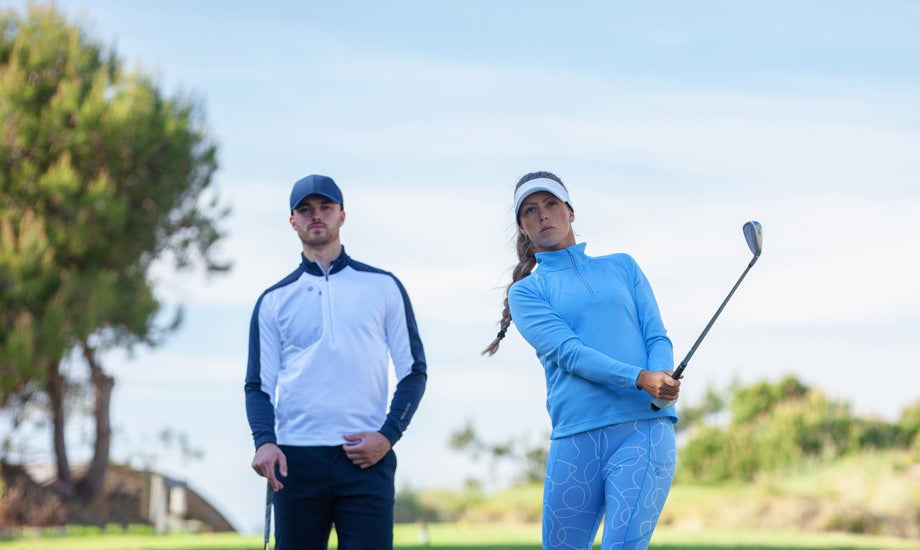
Golf jackets and mid layers
For cooler days or early morning tee times, a stylish golf jacket or mid layer is a good idea for providing extra warmth. A windbreaker jacket or a vest will help keep you insulated, while mid layers tend to be full zip-up or quarter-zip styles. Look for styles made from lightweight, breathable materials that allow for ease of movement while also keeping you warm: sleek yet functional is the goal.
Golf pants
On the course, most golfers wear golf pants or shorts, with tailored trousers or golf-specific pants being the norm. Note that despite their length, cargo pants and jeans are usually not permitted on most golf courses.
For ultimate comfort and flexibility, opt for stretch golf shorts or pants made from stretchy materials. These allow for a full range of motion during your swing, while keeping you comfortable throughout your round.
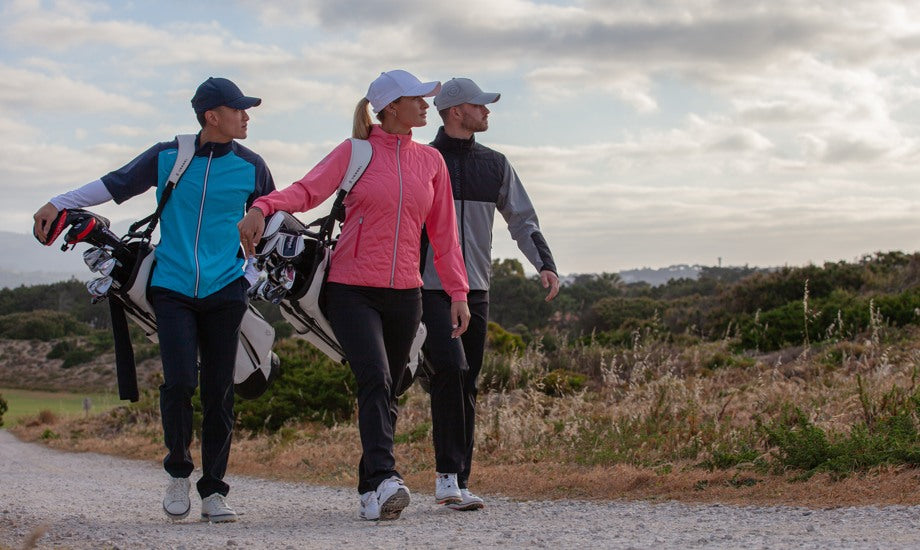

Dressing for inclement weather
Dressing for golf isn’t just about looking the part; it's also about being prepared for whatever the weather may bring. And forget missing a tee time simply because it’s raining: a little wet weather just calls for a whole separate category of golf clothing—but with the right gear, you can stay dry and comfortable on the course.
When selecting rain gear for golfing, opt for 100% waterproof golf jackets, pants, and hats that are breathable. This will ensure you stay dry without overheating or feeling uncomfortable. Lined rain gear offers both warmth and rain protection, making it ideal for colder, drizzly days, while lightweight rain gear can be worn directly over your golf shirt on days when it’s warm but just a bit wet.
It's important to note that some golf courses may not allow rain gear in the clubhouse. Even if this isn’t the rule at your golf course, it’s a good idea to wear your golf pants underneath your rain pants: this is generally more comfortable than wearing only rain pants, anyway.
On particularly cold days, thermal base layers are an essential for additional warmth. These are designed to keep you warm and comfortable without adding bulk to your outfit, allowing you to focus on your game being distracted by the cold.
By following these guidelines, you can stay dry, warm, and comfortable, no matter what the weather brings on the green.
Feet first
For footwear, proper golf shoes are absolutely essential. Golf shoes have special soles that provide stability and traction: some even have spikes that can help you maintain your stance during swings (though do check in advance, as these are increasingly being banned). Some courses may allow certain types of athletic shoes, such as tennis shoes or running shoes, but again, it's always best to check beforehand.
Additional finishing touches
Additional finishing touches include headgear, belts, sunglasses, or even gloves: pieces that not only look good, but can also enhance your performance on the course.
Headgear is a great way to add a more personalized finishing touch to your golf ensemble. Whether you prefer a classic golf cap or a more fashion-forward visor, make sure it's comfortable and provides adequate sun protection by shielding your eyes while on the course. We suggest a comfortable, breathable golf hat that provides adequate protection from the sun's rays.
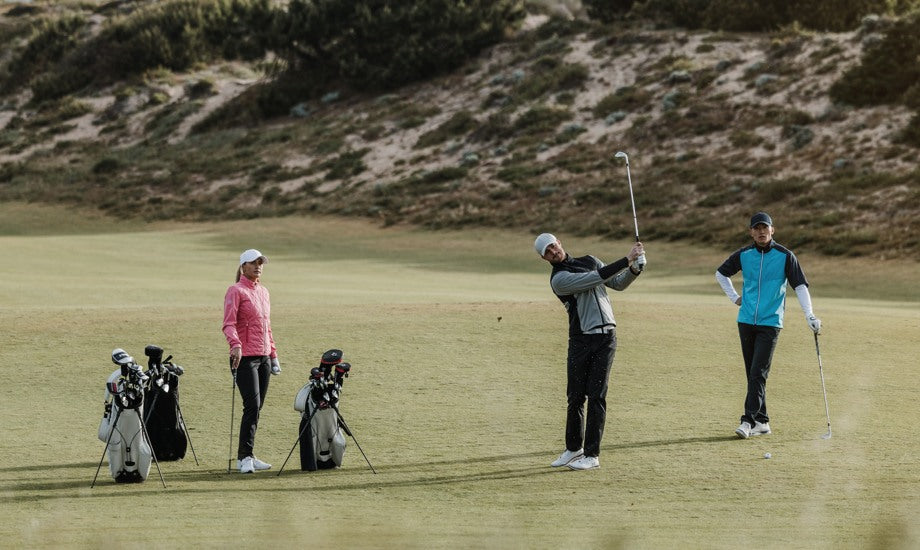
What to Wear Golfing: A Summary – And Some Exceptions
To sum things up, a basic golf outfit consists of a collared shirt, tailored pants or shorts, proper golf shoes, and a hat or a visor. This classic ensemble will ensure you look and feel the part on the course.
Of course, as with any rule, there are a few exceptions. For one, a golf tournament dress code tends to be stricter than a dress code for casual or everyday play. If you’re participating in a tournament, you may be required to adhere to a more formal dress code—these can include specific rules about colors, patterns, and logos or branding.
Second, you may be wondering whether all of these rules apply if you’re just watching a game of golf or a tournament. While spectators aren’t typically held to the same dress code standards as players, it's always a good idea to dress neatly and appropriately for the occasion. More specifically, avoid anything overly casual—jeans and flip flops are no-nos—and instead, opt for a smart-casual outfit that reflects the spirit of the game.
Finally, while the basics are the same, there are a few different rules and considerations when it comes to golf dress codes for women. In addition to collared shirts, tops with sleeves, tailored trousers, and shorts, women may choose to wear a golf skirt or golf dress, which offers both style and functionality on the course. For an in-depth guide about golf womenswear, read Female Golf Dress Code Explained - Appropriate Country Club Wear for Ladies.









